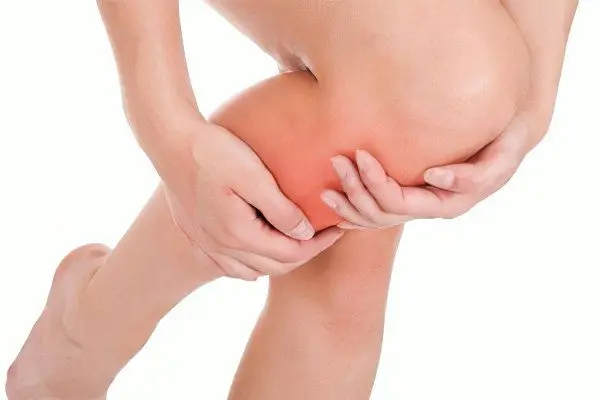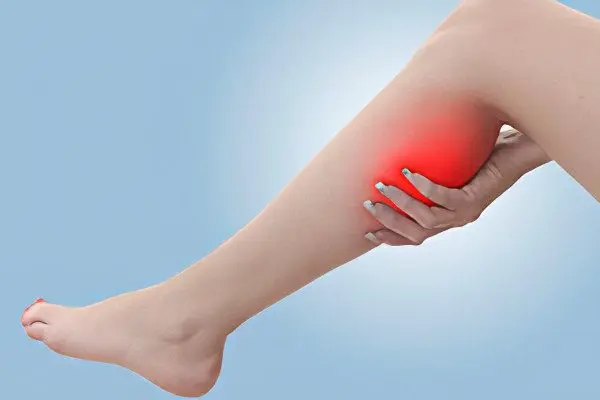Contents

Pain in the lower leg when walking can indicate a developing pathology, or occur under normal conditions, for example, after or during excessive physical exertion. Diseases that provoke pain can affect nerve fibers, blood vessels, and the spine. Most often, pain in the lower leg goes away on its own, after a short rest, but this is possible only if its nature does not have a pathological basis.
Often a person cannot himself determine the factor that provoked painful sensations. In this case, you need to go to the doctor and be examined. Pain should not be treated with analgesics, as temporary relief may be followed by serious deterioration.
What can hurt in the lower leg?

All structures of the lower leg are permeated with nerve fibers. Therefore, irritation or damage to any part of it will lead to painful sensations. This happens when the skin, muscles, ligaments or tendons, bone structures, joints, blood vessels and the nerve endings themselves are affected.
Pain-provoking factors:
Direct tissue damage due to trauma. The pain is acute. After the source of injury is removed, the pain will begin to subside.
Inflammation. This process is accompanied by swelling of tissues, dilation of blood vessels, an increase in the number of leukocytes in the affected area, compression of nerve fibers, which provokes pain.
Deterioration of the nutrition of the lower leg due to failures in the circulatory system. Normally, blood continuously supplies useful substances to the lower leg and carries away metabolic products. If this process is disturbed, then the metabolic products settle in the tissues of the lower leg and cause pain. It is enhanced by oxygen starvation.
Damage to nerve fibers. Pain in the lower leg can be triggered by damage to the nerve trunks at the level of the spinal cord or in another area that has a relationship with its structures.
Causes of pain in the leg

There are several main reasons that can lead to pain in the lower leg, among them:
Injury received.
Pathology of the bone apparatus of the leg.
Diseases of the muscular structures of the lower leg.
Vascular pathologies.
Diseases of the spine.
Infections.
Tumor neoplasms.
Causes of pain | Possible diseases |
| Injuries to any structures of the lower leg will lead to pain. Its intensity depends on the severity of the damage and the nature of the injury. Major ankle injuries:
|
Pathology of the bone apparatus of the leg | Diseases that can affect the bones of the lower leg:
|
Diseases of the muscular structures of the lower leg | Pathologies of the muscles that can lead to pain in the lower leg:
|
Vascular pathologies | Vascular pathologies that can lead to pain in the lower leg:
|
Diseases of the spine | The lower leg is permeated with nerve fibers that extend from the sacral plexus. It, in turn, comes out of the spinal nerves extending from the spinal cord. Therefore, diseases of the spine, concentrated in the lumbosacral region, can lead to pain in the lower leg. These pathologies include:
|
Инфекции | Infections that can lead to pain in the lower leg:
|
Tumor neoplasms | If a person develops a tumor, then the initial stages of its formation are most often not accompanied by painful sensations. They occur as the tumor grows in size. The lower leg can suffer from the following tumors of a benign nature:
However, tumors are not always benign. Sometimes they may contain cancer cells. Such tumors include: sarcoma, melanoma and squamous cell skin cancer. All malignant tumors tend to grow rapidly and spread metastases. |
Diagnosis of pain in the lower leg
Sometimes the cause of pain in the lower leg is obvious to a person, as in the case of injuries. With such a development of events, it is necessary to immediately contact a traumatologist and receive appropriate assistance. However, the causes of pain in the lower leg are not always on the surface. Often, their identification requires a comprehensive examination and consultations with various specialists (neurologist, angiosurgeon, infectious disease specialist, orthopedist, oncologist, etc.).
Type of disease | Methods of diagnosis |
Diseases of the bone tissue of the leg | To detect Osgood-Schlatter disease, you will need to undergo an x-ray examination, but it reveals pathological changes only in the later stages of the development of the disease. CT is indicated for early diagnosis. Symptoms that are characteristic of this disease:
To detect deforming osteitis, you need to donate blood for biochemical analysis. In this case, the patient will have a high level of alkaline phosphatase. X-ray of the bone allows you to reveal its curvature and deformation, and scintigraphy makes it possible to clarify in which particular parts of the bone excessively active metabolic processes occur. Osteitis symptoms:
|
Diseases of the muscles of the leg | If the pain in the lower leg is provoked by rare muscle spasms and does not bother a person on an ongoing basis, then you can not show any concern. However, when painful sensations haunt a person for a long time, you need to see a doctor:
|
Vascular pathologies of the leg | Vascular damage is always serious, so you need to see a doctor as soon as possible:
|
Diseases of the spine | The earlier the pathology is detected, the higher the likelihood of successful therapy. To identify osteochondrosis of the lumbosacral region, you need to focus on the patient’s complaints:
Instrumental methods of examination include X-ray and CT of the affected area. For the diagnosis of a herniated disc or its protrusion, similar symptoms are characteristic. Diagnostic methods: CT and X-ray. |
Инфекции | Infections that affect soft tissues with the formation of boils, phlegmon, gangrene, erysipelas or trophic ulcers do not cause diagnostic difficulties. Most often, an external examination of the lower leg is enough for a doctor to make a diagnosis. To clarify the nature of the disease, studies such as:
When forming a trophic ulcer, blood is necessarily taken to determine the level of glucose in it. If vascular pathologies are suspected, angiography and dopplerography are performed. Osteomyelitis requires an MRI or CT scan, which allows you to examine in detail the condition of the bones of the lower leg. |
Tumor neoplasms | Tumor neoplasms may not show themselves in any way for a long time. Therefore, you should always pay attention to indirect signs that can indicate developing cancer. Early symptoms include:
To detect a tumor, you will need to undergo a CT or MRI, scintigraphy or angiography. When a neoplasm is formed on the bone tissue, it can be detected using an X-ray examination. Histology of tumor tissues is carried out to determine the presence of malignant cells in it, as well as to clarify the type of neoplasm. |
What to do with pain in the lower leg?

The pain cannot be tolerated. This signal warns a person that something is wrong in his body.
Until the moment the diagnosis is made, the person is shown taking painkillers, which make it possible to alleviate his well-being.
These medicines include:
Drugs from the group of NSAIDs, which are prescribed both for oral administration and intramuscularly. They are used to eliminate almost any type of pain in the lower leg.
For leg injuries. The main aspects of the treatment of a shin injury are reduced to ensuring the immobilization of the limb. Before the arrival of the medical team, cold is applied to the site of injury or sprain. In severe cases, such as fractures or torn ligaments, surgical intervention is required. During the period accompanied by pain, the patient is prescribed painkillers.
At the recovery stage, physiotherapy is indicated: electrophoresis, UHF, magnetotherapy.
Video: What to do if the periosteum is sick (the bone in front below the knee):









